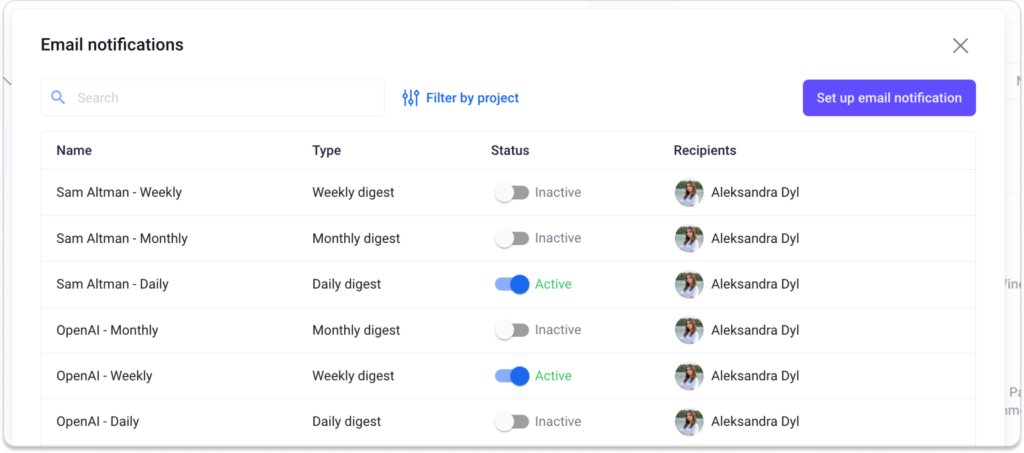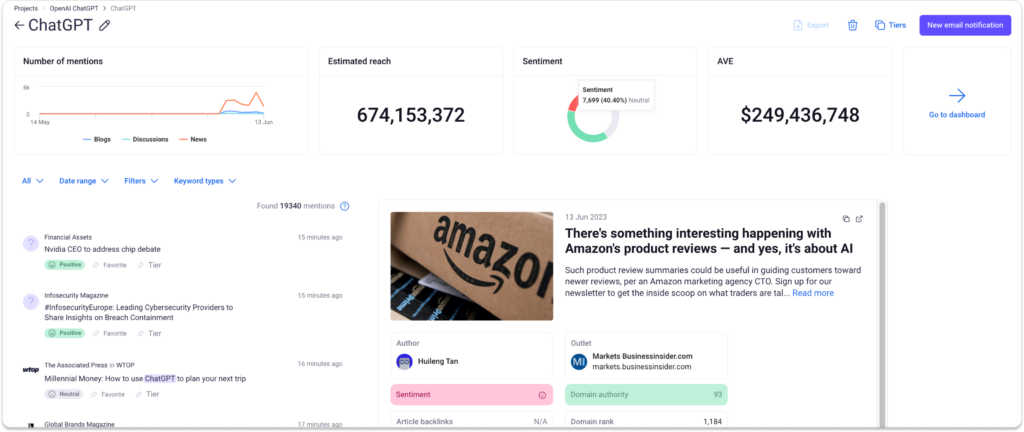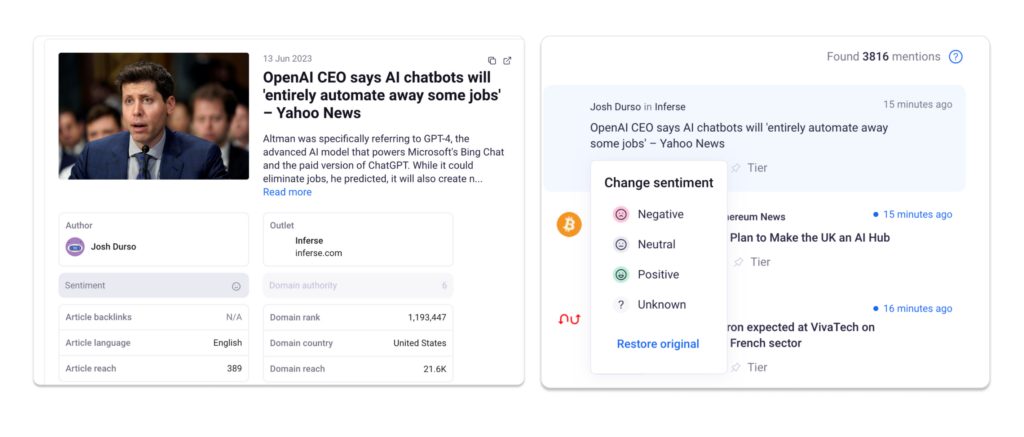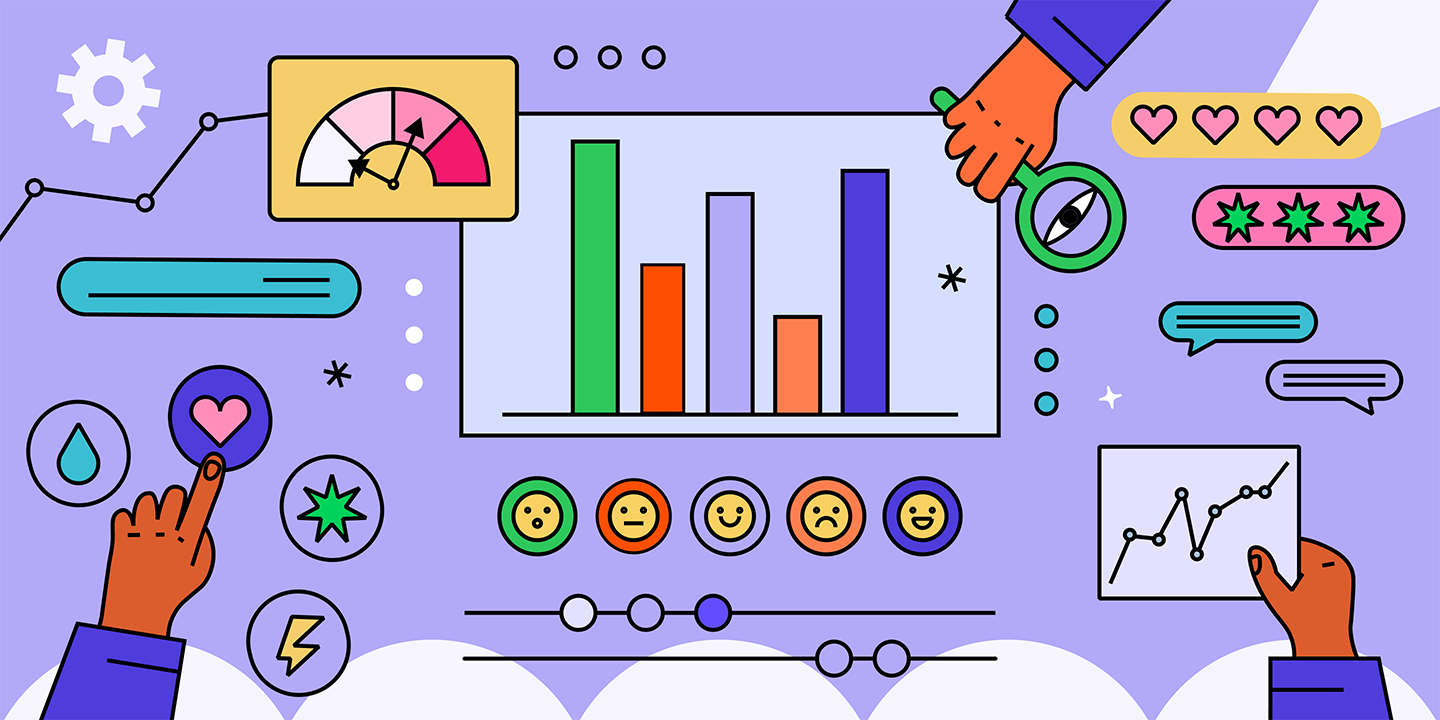Keeping track of who is mentioning you has become one of the most basic activities in PR.
But what about what they are saying? If you have hundreds of mentions coming in daily, determining if they're good or not could be a full-time job. Not anymore - thanks to sentiment analysis in PR.
With a sentiment analysis solution, you can use AI to determine if someone's mention is positive, negative, or neutral. Helping you to quickly assess the situation and react in real-time.
Today, we're going to explain what sentiment analysis in PR is, how it works, and how you can get started today.
- What is sentiment analysis in PR?
- Why is sentiment analysis important?
- What can you use sentiment analysis for as a PR professional?
- How to do sentiment analysis for PR using Prowly
- How does sentiment analysis work?
- Sentiment analysis: challenges and limitations
- What is the value of sentiment analysis
What is sentiment analysis in PR?
Sentiment analysis is a system that uses AI and machine learning to interpret the emotions in a written text. More specifically, it uses sentiment analysis algorithms to determine when someone mentions your company (or your target keyword), and if that mention is positive, negative, or neutral.
This is also sometimes called opinion mining.
What is sentiment analysis in simple words?
In simple words, sentiment analysis means using tools to analyze the way people mention you online: positive, negative or neutral.
For example, take these two sentences from a blog post:
😃 Pepsi is my favorite drink!
🙁 Pepsi is horrible and too sweet compared to Coke.
Thanks to natural language processing, a sentiment analysis system can tell that the first sentence is positive and the second is negative.
You can use sentiment analysis to collect customer feedback, do market research, perform competitor analysis, and many other PR and marketing activities.
Positive sentiment
Sentiment analysis algorithms can pick up instances when someone mentions your brand name or term in a positive light. Here is an example of positive sentiment:
Prowly is superb - it helped me find dozens of journalists I can get in touch with.

Negative sentiment
When someone mentions you in a negative context, a good sentiment analysis tool should pick it up immediately so you can react in time. Sometimes, negative mentions can keep piling up in a short time frame and cause a proper media crisis. For example:
BMW is the worst car manufacturer ever - broke down 17 times during the warranty period!

Neutral sentiment
Sometimes, a mention is just a mention without negative or positive sentiment. The person is just mentioning you in a piece of news or stating a fact. For example:
Slack was purchased by Salesforce.
Why is sentiment analysis important?
So what sentiment analysis is has hopefully been made clear. But why is it important?
For PR professionals, there are a whole range of reasons why it's worth looking into a sentiment analysis system. Here are some of them:
- helps gather customer feedback in real-time
- automates the analysis of qualitative feedback
- helps you avert and respond to crises
- allows you to monitor how people feel about your competitors and their brands
- provides new insights into your marketing, sales, and customer support efforts
All in all, sentiment analysis (opinion mining) tools provide a massive return on investment across the entire organization, especially from a PR perspective.
What can you use sentiment analysis for as a PR professional?
Now, let's get into specific details on the use of sentiment analysis in PR:
#1 Public sentiment management
Simply put, to learn what the general public thinks about your brand or a certain topic. Before putting together a press release, you can use sentiment analysis models to find out how the general public feels about your business.
#2 Brand and personal brand reputation management
You can monitor the mentions of people who are relevant to you as a PR professional. For example, CEOs, spokespeople, and experts in specified fields. Prowly also allows you to track brand mentions and keep up with competitor companies or the businesses you look up to and want to learn from.
#3 Crisis prevention and management
You can use sentiment analysis tools to find out when a crisis is happening in real-time. With Prowly, you can set up custom email notifications for negative sentiment. Choose to get recurring digests or individual alerts for the most important mentions, for example:
- Monitor search queries with real-time alerts
- Receive daily, weekly or monthly mention summaries
- Share notifications and select teammates as recipients

You can set any type of notification, but negative sentiment alerts can help track the negative narrative behind your brand. While good news is always welcome, a spike in bad news can be an introduction to a crisis that you can hopefully mitigate.
#4 Customer satisfaction and feedback
Don't wait for customers to provide feedback when they stop paying. Catch feedback as it happens across the web with sentiment analysis. You can get reviews from existing customers or gauge feedback from potential and new customers all in one go.
#5 Market and trend research
If you want to find out how people feel about a certain topic or your client’s brand, simply load up the key terms and do some sentiment classification for them. Find out how the general public feels about an idea so you can better craft your future PR campaigns and manage your brand reputation.
#6 Tracking the success of PR campaigns
If you’ve just launched a PR campaign to promote a new CEO, product, company branch or something else, sentiment classification can help you find out how the world feels about it as it unfolds.
How to do sentiment analysis for PR using Prowly
Prowly is a PR software with many different use cases, and sentiment analysis is one of them. It's a more powerful Google Alerts alternative that lets you save time on research and manage your PR reputation more quickly and easily.
Along with features such as a vast media database, media pitching tool, press release creator, online newsroom, PR CRM and many others, Prowly also provides sentiment analysis to make your job as a PR even easier.
Setting up sentiment analysis
Doing sentiment analysis manually is a lot of work. You'd have to find the mentions yourself and then analyze them one by one and assign them a sentiment score. Or you can use our tool instead.
Simply choose your brand or term, the languages, and the countries you want to track. This takes just a few minutes and within 15 seconds, you'll start getting your first mentions from thousands of websites.
Here are some of the things you can track:
- brands
- competitors
- keywords
- people
- authors
- backlinks 🔗
You can choose different languages and countries to narrow down your search even more.
We have three examples for the purposes of this content piece:
- the OpenAI company (Brand tracking);
- its CEO, Sam Altman (People tracking);
- and ChatGPT (keyword tracking).
Here is the Media Monitoring Dashboard for this project, where you can see sentiment analysis for all three queries at once.
Once you save a search query for your project, the media monitoring and sentiment analysis doesn’t stop - new terms will keep coming in automatically.
What is sentiment score and how is it calculated in Prowly?
The sentiment score is a scale in Prowly that reflects the emotion someone expresses towards a term, brand, or person in a piece of writing.

This scale reflects the depth of emotions in a piece of writing. By using machine learning and natural language processing, Prowly analyzes each mention of your desired term and gives it one of three ratings:
- positive
- neutral
- negative
We have also prepared other materials to help you effectively track your PR activities. Learn everything you need to get started with modern PR metrics from these articles:
👉🏼 What is Advertising Value Equivalency in PR? (+ AVE alternatives)
👉🏼 How to calculate your (or your clients') Share of Voice
👉🏼 What is UVPM in PR? (+ UVPM metric alternatives)
👉🏼 A Media Mentions guide
How to interpret sentiment analysis?
Once your mentions and sentiment analysis results start coming in, you can use this information for your PR needs. Here is an example of sentiment analysis on ChatGPT:
As a PR specialist, you can work out that most people feel quite neutral about ChatGPT in their mentions, followed by positive mentions. Last but not least, a minority of people feel negatively towards ChatGPT.
At this point, if you're preparing a press release on this topic, you'll know how the public feels about it and what angle you can take.
The data in Prowly is updated in real-time, but that does not mean you need to be constantly in the tool and reviewing your mentions. Once a week should be enough - unless you get many mentions with a negative sentiment all at once.
As you can see from the screenshots above, there are many different ways to present sentiment analysis data, including a graphic with trends over time, a donut chart or just a plain list with numbers.
The number of mentions is exactly what it says - the total number of mentions. From the image above you can see that, in Prowly, you can easily filter by location and get data specific to only the country that most interests you.
Last but not least, ‘mention estimated reach’ is the approximate number of people who saw a mention of your term across different countries.
Extra feature: with Prowly, you can also personalize the data visualization of the tool to make it easier to interpret the data. Also, you can export it as an .XLSX or .CSV file.
How does sentiment analysis work?
For PR pros, sentiment analysis provides multiple benefits:
- an accurate brand perception
- a way to spot crises in real time
- improved customer service
- a more genuine connection with your audience
And with tools like Prowly, advanced sentiment analysis is as simple as taking a few minutes to set up the tool. That makes it a no-brainer for any PR pro concerned with sentiment tracking.
What are the methods used in sentiment analysis?
All sentiment analysis methods are powered by natural language processing (NLP). This is a computational method that analyzes text and determines what the emotion behind it is.
Here are the three main ways to do it:
👉 Rule-based sentiment analysis: the app creates a lexicon of items that describe sentiment (e.g. fast = good). The text is prepared and formatted, with all the mentions of the positive, negative, and neutral terms counted up. If the number of negative mentions is the highest, the text is negative.
👉 Automatic analysis: the text is extracted and prepared for analysis. The algorithm is then trained based on sample text on what sentiment is. It can then successfully classify the mentions and predict future ones.
🤝 Hybrid approach: combines rule-based and automatic analysis, which provides even better accuracy. However, these systems are harder to build.
Sentiment Analysis - the AI behind Media Monitoring in Prowly
Prowly uses natural language processing to determine the sentiment of an article or a mention. NLP is part of an AI model for text analysis.
- The models that we use work in more than 100 different languages. So, even if you want to analyze a mention in a language different than your native tongue, Prowly treats it the same and analyzes it.
- Prowly breaks down the article's sentiment into three categories: positive, neutral, and negative. The result we give you is based on the entire article and its context.
However, you can find more AI-driven solutions in Prowly, such as the press release generator, media contact suggestions, or pitch draft creator. Find out more about how Prowly's AI can help you at work.
What if the sentiment doesn't match the context of the article?
Let's take articles on pharmaceuticals as an example. The entire article uses anything but positive words, however, it's all terms about illnesses, symptoms, and various types of pain. Then comes the cure.
While the mention of the cure is positive, most machine learning models don't understand human language 100% and would flag the article as negative sentiment.
In such cases, you can change the sentiment manually, both in this individual example and in campaign statistics.
Sentiment analysis: challenges and limitations
Sentiment analysis can be extremely useful, but it's not omnipotent.
It can give you the basic context of what a post or mention is about, but it cannot read things such as the overall context or cultural nuances. Nor can it understand sarcasm, irony, or slang.

For example, if someone wrote "Wow, that new Barbie film sure is amazing. Absolutely lit fam!" your sentiment analysis tool could pick it up as positive sentiment. But in reality, it could be a mix of slang and heavy irony, so the tool could be wrong in its assumptions.
When this happens in Prowly, you can change the sentiment of a mention manually. AI can be wrong, but that's no reason to ruin your perfect data.
What is the value of sentiment analysis?
Effective measurement helps you understand the impact of your PR efforts and enables you to make informed decisions and demonstrate the value of PR to your stakeholders. Interested in learning more about PR metrics? The recorded sessions from PR Episodes 2024 explore how to effectively gauge the impact of your efforts.
Staying on top of what the public thinks about you can be challenging.
With a big brand and hundreds (if not thousands) of mentions daily, doing sentiment analysis manually is nearly impossible. With sentiment analysis tools like Prowly, you can automate the tedious parts of opinion mining and sentiment analysis and use your data for better PR results.
With Prowly, you can monitor both the web and social media platforms. Set it up in a few clicks and watch the mentions roll in. Grab your free trial today and get started!

